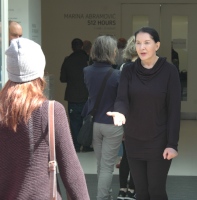 | |
 | |
 Interactive map of area | |
| Established | 1970 |
|---|---|
| Location | Kensington Gardens Westminster, W2 United Kingdom |
| Coordinates | 51°30′17″N0°10′30″W / 51.50466°N 0.17505°W |
| Visitors | 1,187,621 (2016) [1] |
| Director | Hans-Ulrich Obrist (CEO, Bettina Korek) |
| Public transit access | |
| Website | www |
The Serpentine Galleries are two contemporary art galleries in Kensington Gardens, Westminster, Greater London. Recently rebranded to just Serpentine, [2] the organisation is split across Serpentine South (previously known as the Serpentine Gallery) and Serpentine North (previously known as the Sackler Gallery).
Contents
- Serpentine South
- Serpentine North
- Pavilions
- Gallery of temporary pavilions
- See also
- References
- External links
The gallery spaces are within five minutes' walk of each other, linked by the bridge over the Serpentine Lake from which the galleries get their names. Their exhibitions, architecture, education and public programmes attract up to 1.2 million visitors a year. Admission to both galleries is free. The CEO is Bettina Korek, and the artistic director Hans Ulrich Obrist.

















